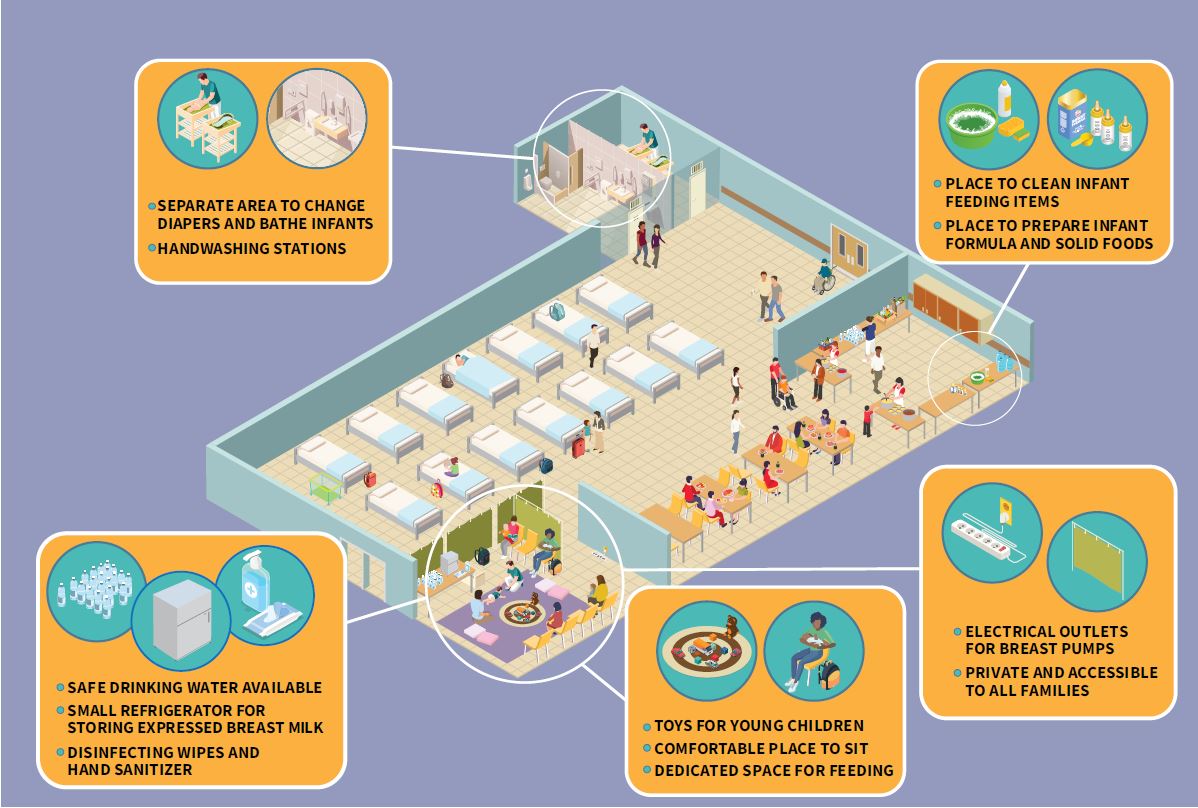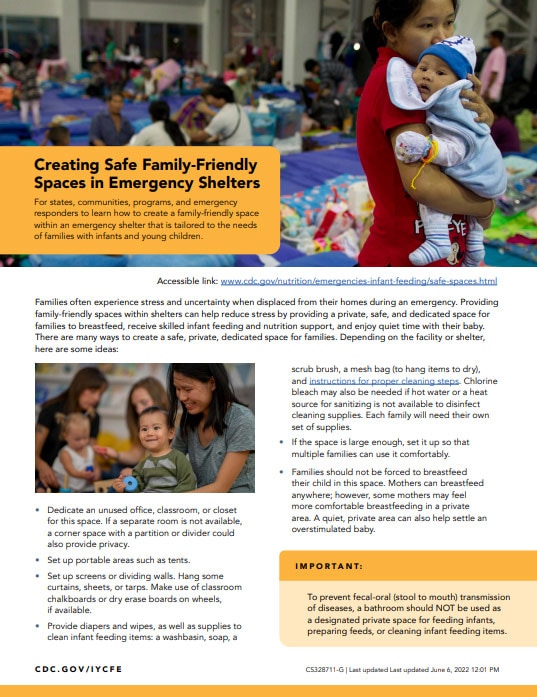Creating Safe Family-Friendly Spaces in Emergency Shelters
For states, communities, programs, and emergency responders to learn how to create a family-friendly space within an emergency shelter that is tailored to the needs of families with infants and young children.
Families often experience stress and uncertainty when displaced from their homes during an emergency. Providing family-friendly spaces within shelters can help reduce stress by providing a private, safe, and dedicated space for families to breastfeed, receive skilled infant feeding and nutrition support, and enjoy quiet time with their baby. There are many ways to create a safe, private, dedicated space for families. Depending on the facility or shelter, here are some ideas:
- Dedicate an unused office, classroom, or closet for this space. If a separate room is not available, a corner space with a partition or divider could also provide privacy.
- Set up portable areas such as tents.
- Set up screens or dividing walls. Hang some curtains, sheets, or tarps. Make use of classroom chalkboards or dry erase boards on wheels, if available.
- Provide diapers and wipes, as well as supplies to clean infant feeding items: a washbasin, soap, a scrub brush, a mesh bag (to hang items to dry), and instructions for proper cleaning steps. Chlorine bleach may also be needed if hot water or a heat source for sanitizing is not available to disinfect cleaning supplies. Each family will need their own set of supplies.
- If the space is large enough, set it up so that multiple families can use it comfortably.
- Families should not be forced to breastfeed their child in this space. Mothers can breastfeed anywhere; however, some mothers may feel more comfortable breastfeeding in a private area. A quiet, private area can also help settle an overstimulated baby.
To prevent fecal-oral (stool to mouth) transmission of diseases, a bathroom should NOT be used as a designated private space for feeding infants, preparing feeds, or cleaning infant feeding items.
It is important that a family-friendly space:
- is private.
- is cleaned and disinfected frequently (at least every 4-6 hours for infection prevention and control).
- is easily accessible to all families, including those with disabilities or special health care needs.
- has a comfortable place to sit, such as a chair or cushions.
- has adequate lighting.
- has safe drinking water available within the family-friendly space; this is especially important for a lactating woman.
- has a small refrigerator that is dedicated to storing expressed breast milk, if possible.
- has an outlet for pumping breast milk (note: pumps should only be used if pump equipment can be properly cleaned and milk can be safely stored).
- contains toys appropriate for young children that can easily be wiped down.
- has appropriate and well-marked signage in both English and Spanish (or other languages used in the community) so that families can find the space.
- has easy access to safe water and areas for cleaning, food preparation, handwashing, and bathing.
- has a dedicated space for feeding that is separate from the areas to change diapers, clean infant feeding items, and prepare infant formula and foods for young children.


